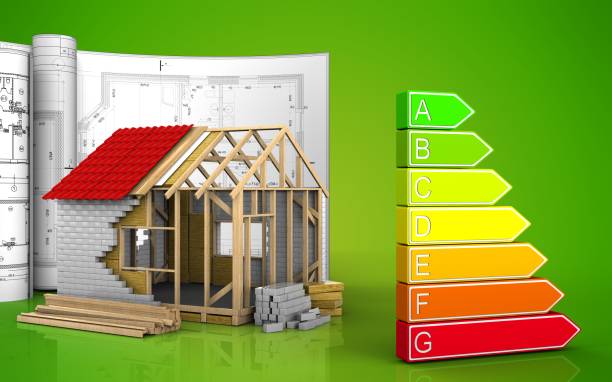Prefab homes are favoured by self-builders for their speed and cost-effectiveness. While traditional prefab designs may evoke images of boxy post-war structures, modern prefab homes offer diverse design options, exceptional efficiency, and cost predictability, showcasing the evolution of this construction method.
What is a prefabricated flat pack home?
You may have encountered the terms “prefab flat pack homes,” also known as modular or kit homes. These homes share the same concept, featuring components delivered in a flat pack format. They have been popular since the 1960s and are particularly prevalent in European countries like Sweden.
At the end of World War II, this type of home gained popularity in the UK due to a widespread housing shortage. However, the prefabricated homes built during this period were often cramped and inefficient.
Flatpack homes have evolved significantly since then, now characterized by style, energy efficiency, and eco-friendliness. Typically, they are available in two options:
- Bare bones – providing basic construction elements
- Turnkey projects – Offering fully finished and furnished homes.
In a “Bare Bones” unit, essential components for building your home are provided, including the floor, ceiling, walls, doors, windows, etc. The company delivers all structural elements to your site, and you are responsible for assembling them.
In a “Basic Build” option for modular homes, the company supplies materials and also constructs the home. You are responsible for tasks such as flooring installation, painting, decorating, and fitting kitchens and bathrooms.
In a “Turnkey” project, the company manages nearly all aspects of the build, providing full completion. You are relieved from concerns regarding flooring, painting, decorating, or fitting bathrooms and kitchens, as the company handles everything.
Utilize a timber frame cost calculator to budget effectively and prevent financial surprises. This tool provides a clearer understanding of expenses, empowering you to make informed decisions during your construction journey.
Pros and cons of prefabricated houses
Pros:
1. Quick to construct
Flatpack homes can be built in weeks, significantly faster than traditional homes, offering a notable advantage.
2. Easy to build
Flatpack homes, largely prefabricated in factories, make assembly on your end relatively straightforward.
3. Affordable
Flatpack homes typically cost 10-25% less than other home types, offering affordability and making them an excellent option for first-time homeowners.
4. Eco-friendly
Flatpack homes, often crafted from timber, are highly energy-efficient, featuring airtightness. Some, like Swedish designs, utilize strong SIP panels for insulation.
Cons:
5. Lifespan
Prefab homes commonly utilize timber frames. While some may perceive timber as less durable than brick, with proper care, it can last up to 100 years.
6. Heat accumulation
Timber houses, being lighter than brick and mortar ones, may not retain warmth as long after central heating is turned off. This is due to timber frame homes not accumulating heat from the surroundings.
7. Fire resistance
Modular homes with timber walls and ceilings are less fire-resistant compared to those made of concrete and brick. Wood, being combustible, offers less protection in case of fire incidents.
Prefab flatpack homes offer speed, affordability, and eco-friendliness, evolving from traditional boxy structures to modern, diverse designs. While they may have drawbacks like lifespan and fire resistance, they remain a popular choice for quick, cost-effective housing solutions with unique design options.

